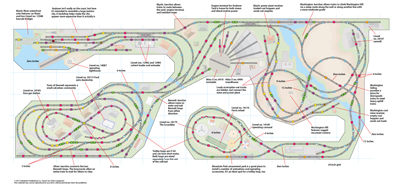
Layout designer: Michael Tylick Scale: O Layout size: 12 x 35 feet Track type: GarGraves Minimum curve: O-31 Originally appeared in the March 2012 issue of Classic Toy Trains. Big Time Fun track plan Big Time Fun schematic Big Time Fun parts list […]
Read More…
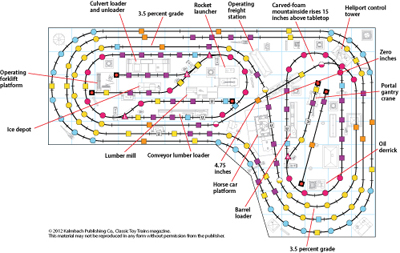
Layout designer: Kent Johnson Scale: O Layout size: 9 x 14 feet Track type: Lionel O Minimum curve: O-31 Originally appeared in the February 2012 issue of Classic Toy Trains. See a PDF version of this track plan by clicking here. See the schematics of this plan by clicking here. […]
Read More…
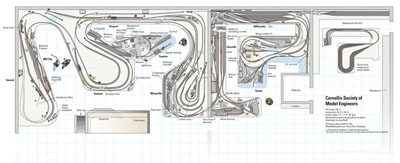
Name: Cascade Pacific Club: Corvallis Society of Model Engineers Scale: HO (1:87.1) Size: 26 x 78 feet Prototype: freelanced Locale: western Oregon Era: circa 1950s to present Style: walk-in Mainline run: 330 feet Minimum radius: 36″ Minimum turnout: no. 6 Maximum grade: 2 percent Originally appeared in the March 2012 issue of Model Railroader. Click […]
Read More…
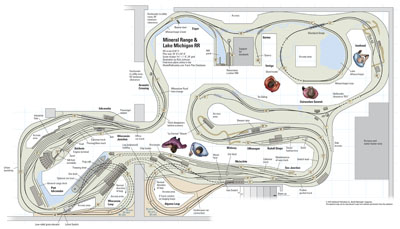
Name: Mineral Range & Lake Michigan RR Layout designer: John Armstrong Scale: HO (1:87.1) Size: 24′-0″ x 43′-6″ Theme: ore, pulpwood, and lumber traffic Locale: Upper Peninsula, Michigan Era: late steam/early diesel Style: walkaround Mainline run: 164 feet Minimum radius: 36″ (main), 30″ (staging loops) Minimum turnout: no. 6 (main), no. 5 (yard) Maximum grade: […]
Read More…
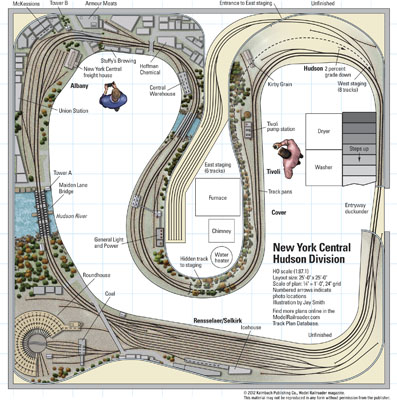
Name: New York Central Hudson Division Layout designer: Vic Roman Scale: HO (1:87.1) Size: 25 x 25 feet Prototype: New York Central Locale: upstate New York (Albany to Tivoli) Era: 1948 Style: walk-around Mainline run: 150 feet Minimum radius: 30″ Minimum turnout: no. 6 Maximum grade: none Originally appeared in the March 2012 issue of […]
Read More…
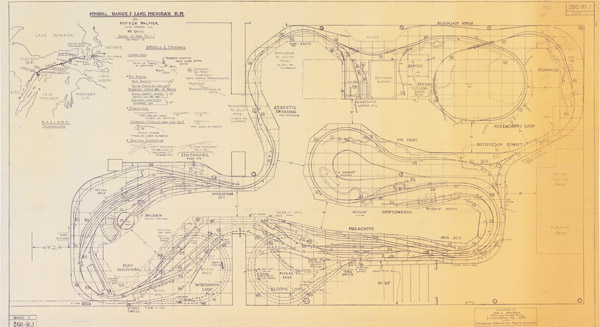
John Armstong had produced hundreds of model railroad track plans published in magazines and books, and in fact, earned the nickname “Dean of Model Railroad Track Planning.” He drew this never-published Mineral Range & Lake Michigan RR for a paying client, but it was apparently forgotten for many years in a home in a Chicago […]
Read More…
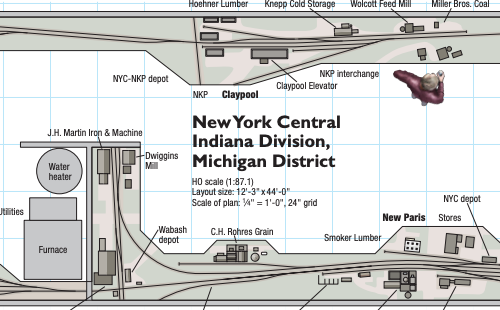
Name: The “Michigan” Layout designer: Jim Six Scale: HO (1:87) Size: 12′-3″ x 44′-0″ Prototype: New York Central’s Michigan District Locale: northeastern Indiana Period: 1955 Style: around the walls Mainline run: 116 feet Minimum radius: 42″ Minimum turnout: no. 6 Maximum grade: 0.25 percent Originally appeared in Model Railroad Planning 2012. Click on the link […]
Read More…
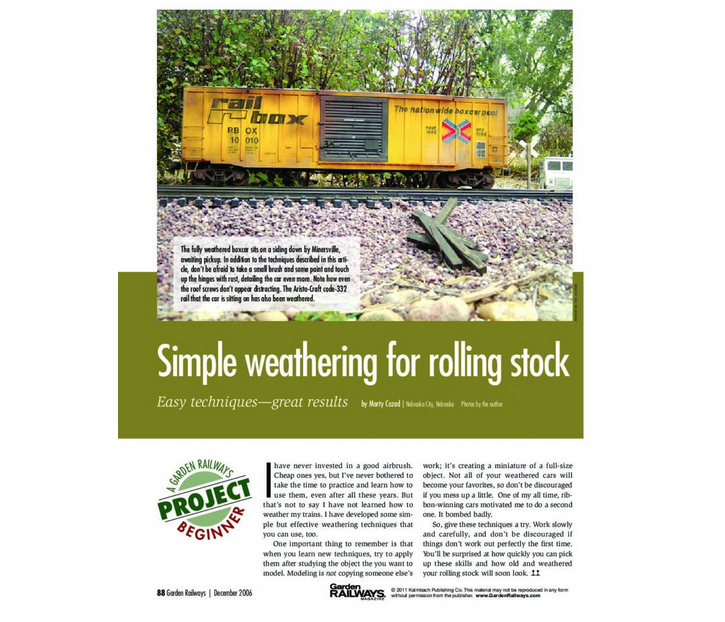
Simple techniques for weathering rolling stock Don’t miss Alan Olson’s series on weathering in the February 2012 issue. Trains.com members can download a companion article on weathering techniques for rolling stock. […]
Read More…
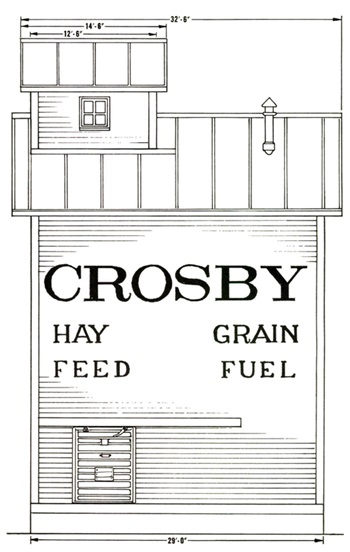
Download the PDF of this project here. This PDF is formatted to print on your home printer. Most pieces are formatted to fit on a 8.5″ x 11″ piece of paper. For larger parts of the plan, you will see “break lines.” Line up the break lines to create the larger piece. Despite our best […]
Read More…
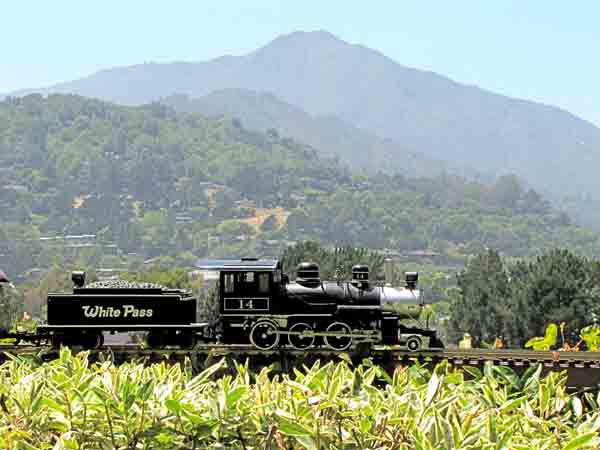
Sometimes the most expedient way to get your outdoor railway from point A to point B is on benchwork, so called because the height of the roadbed is similar to that of a workbench and facilitates the handling of trains and track. The many styles of benchwork construction seem to correspond to the skills of […]
Read More…
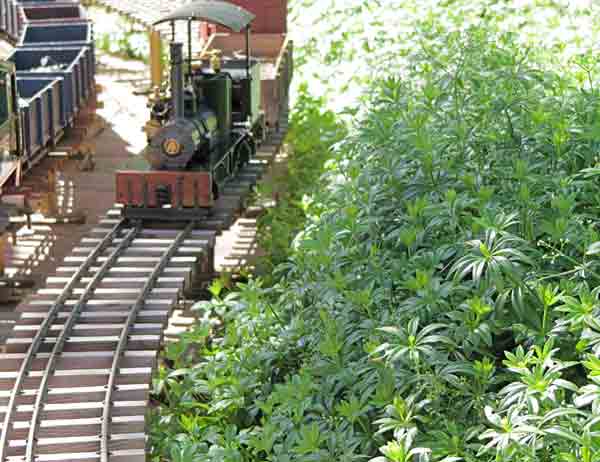
Common name: Sweet woodruff Latin name: Galium odoratum, syn. Asperula odorata Plant type: Perennial USDA Hardiness Zones: 4-9 (sheltered or near the house in Zone 3) Cultural needs: Shade or partial shade, moist (even wet) soil Plant size: 6-12″ high, spreading quickly to 9-12″ wide Do you have a rather large shady spot in need […]
Read More…
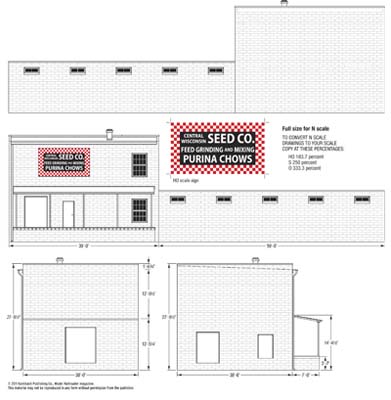
The full-size Central Seed Co. was built shortly after World War II. What made this business interesting is that it received rail shipments from the Green Bay & Western at one end of the building and Soo Line at the other. Truck shipments were handled at the covered dock. In the February 2012 issue of […]
Read More…












